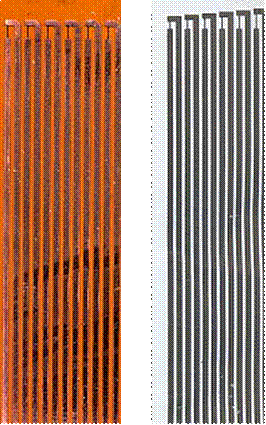Research
Printed Hot-Wire Anemometers
Project Overview
This project will develop an inherently inexpensive, conformable multi-functional MEMS sensor matrix for the aero-structural monitoring of highly flexible aircraft wing structures. The joint use of flow and structural sensors to monitor airframes is becoming vital because of the complex fluid-structure interaction (FSI) arising from the continuous exposure of lightweight composite structures to unsteady flows.
Flow sensors are typically expensive, and hard to calibrate and operate in a non-laboratory environment. MEMS sensors offer a potential solution, however the conventional iterative additive development process is lengthy and the required packaging process to protect a sensor substantially increases cost. Using an inkjet printing process, complex packaged MEMS components can be fabricated with an order of magnitude less cost and significantly less time, while obtaining a reliable sensor capable of withstanding the aircraft environment.
The University of California at Santa Cruz (UCSC) will focus on characterizing and optimizing novel inks to rapidly, reliably print MEMS on relevant substrates, and Tao Systems will develop the high-sensitivity electronics and real-time signal processing techniques to demonstrate the operation of an inexpensively printed, embedded MEMS sensor matrix to obtain aerodynamic parameters with minimal calibration requirements.
The increasing costs of fuel are driving the demand for efficiency across several aerodynamics-related industries from civilian/military aircraft to ground vehicles to wind turbines. An increase in efficiency in these industries through the use of lightweight structures necessitates the understanding and monitoring of the complex fluid-structure interaction (FSI) in order to reliably operate over long periods.
Inexpensive tools to monitor the FSI in these industries will have a direct impact on the extent to which industries can raise performance while maintaining safety and reliability. Clean renewable energy technologies such as wind turbines depend on optimizing blade performance and will benefit from a blade aero-structural monitoring system. Inexpensive MEMS-based aero-structural monitoring systems will make continuous monitoring of structures in unsteady aerodynamic flows routine and will be subsequently more accessible to university-level students for the advancement of autonomous efficient vehicle control systems.
The MEMS printing process will be used in hands-on MEMS design and fabrication classroom activities, thus advancing discovery and understanding while promoting teaching, training and learning.
